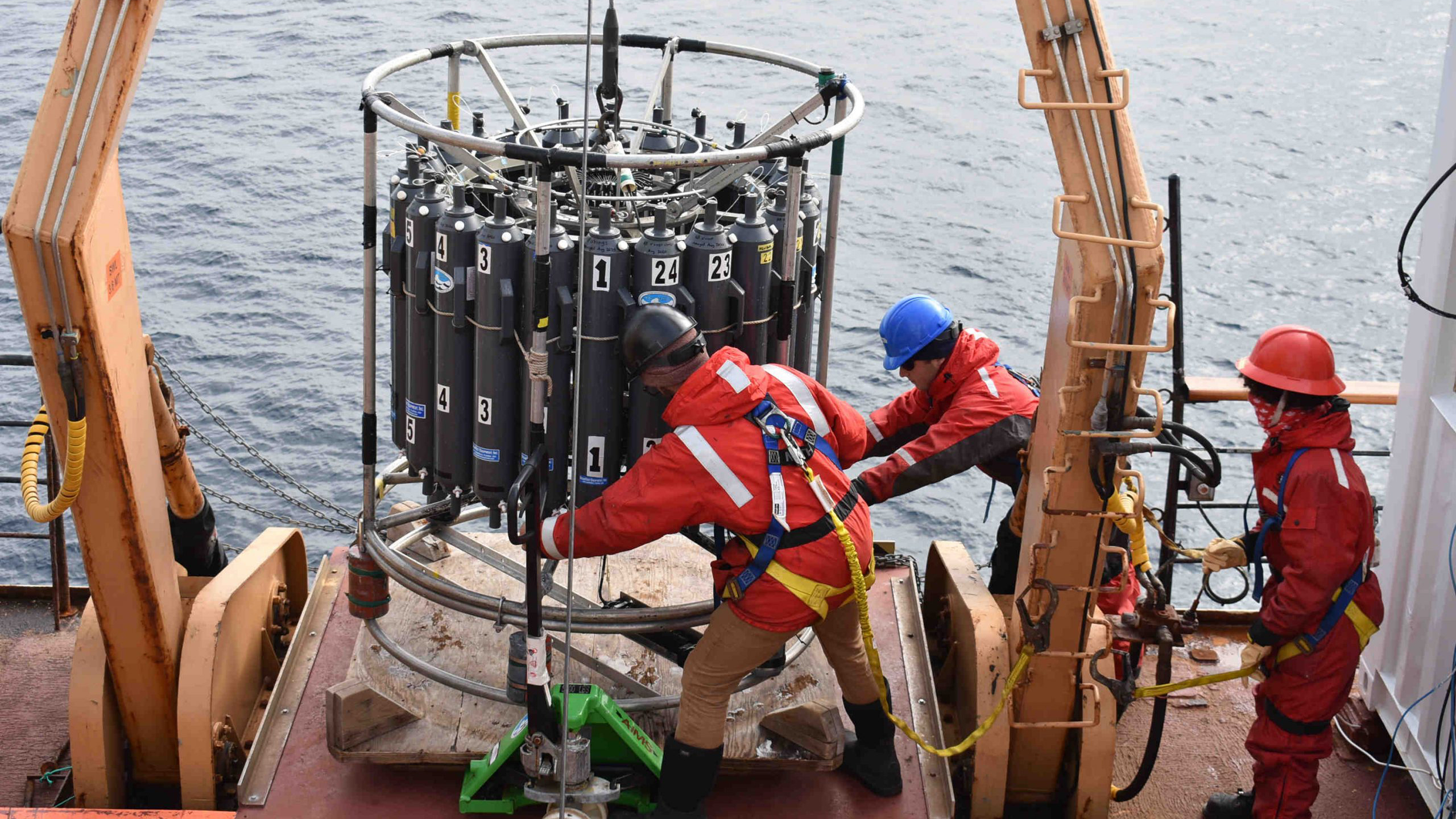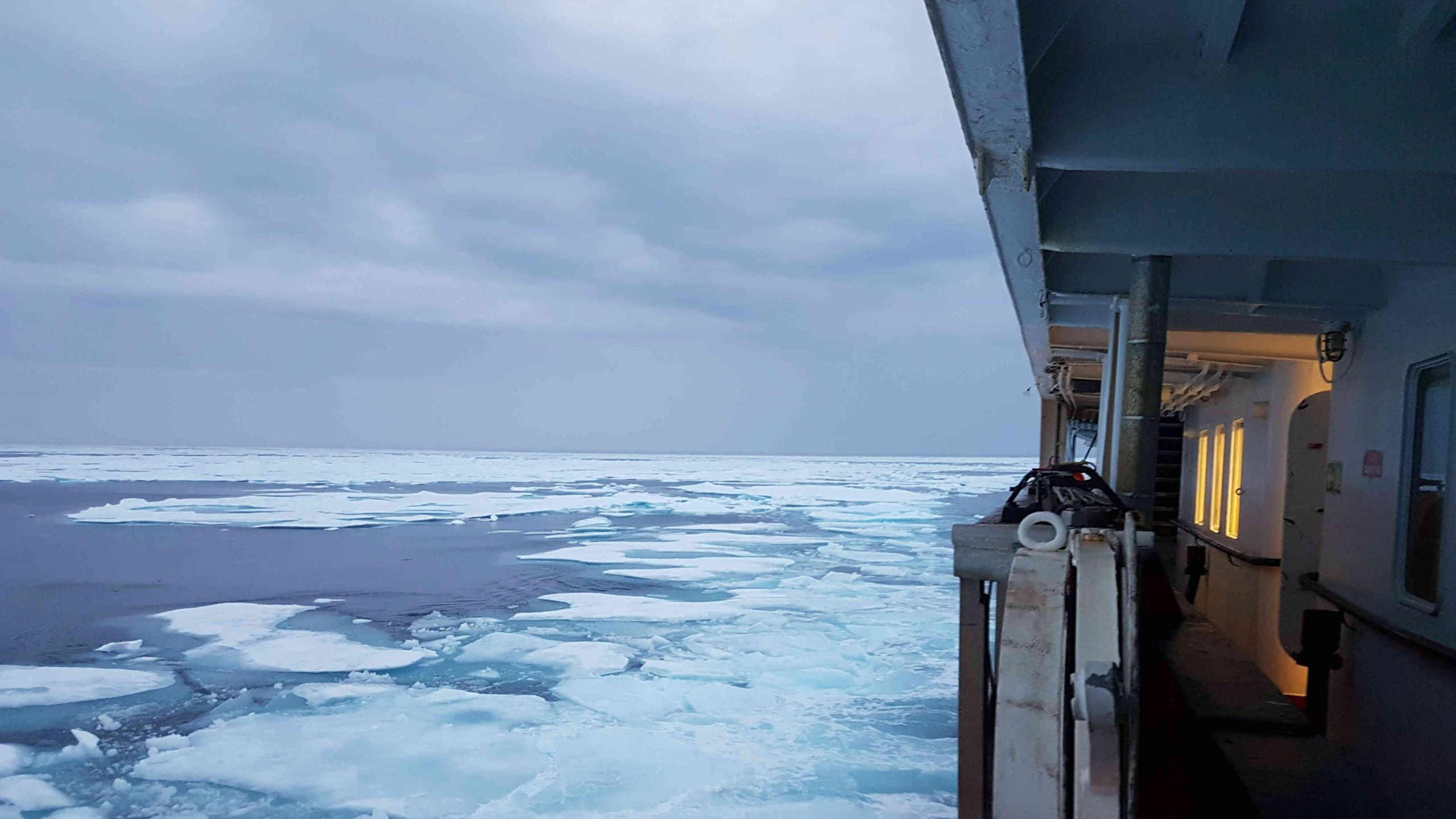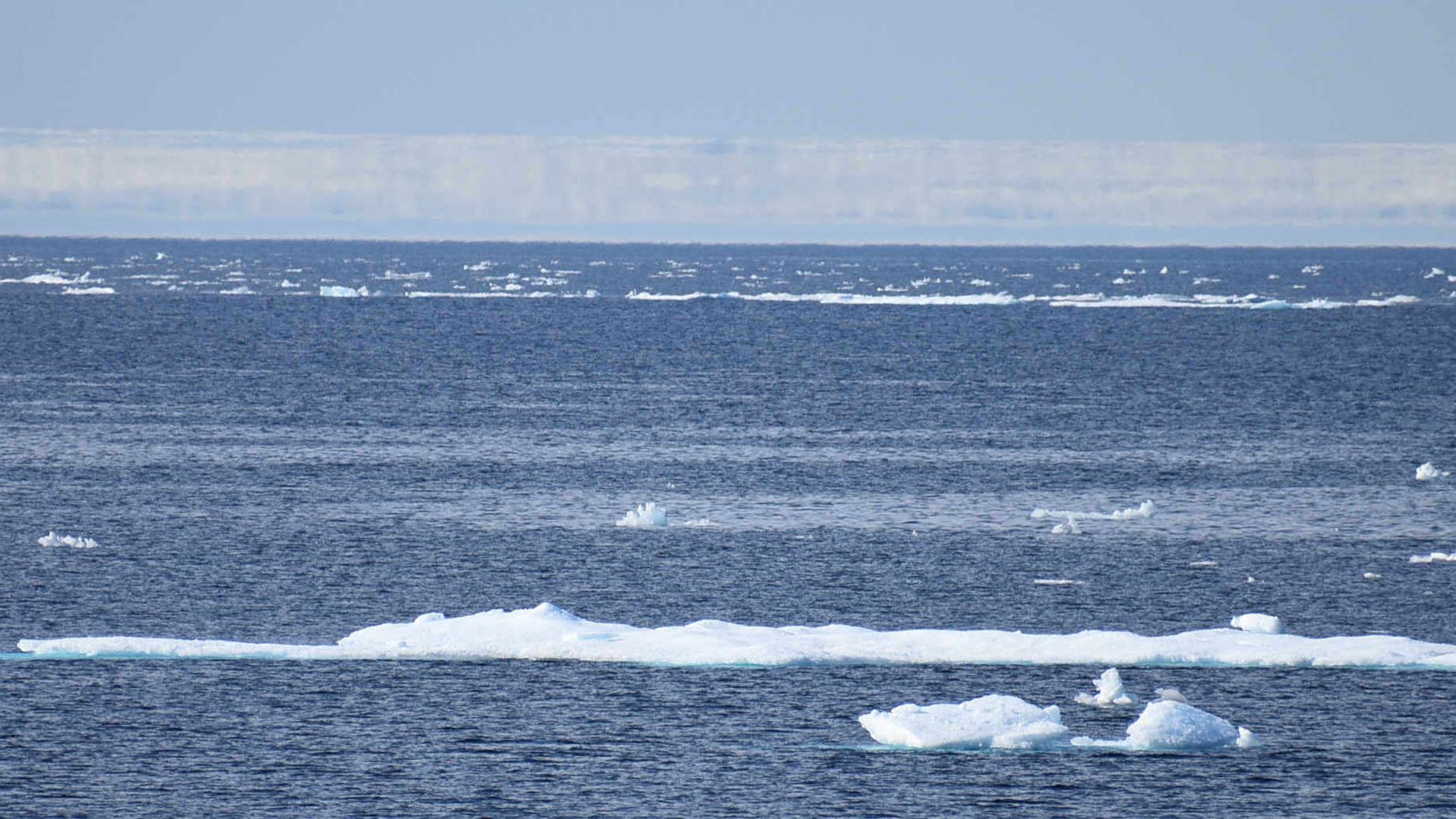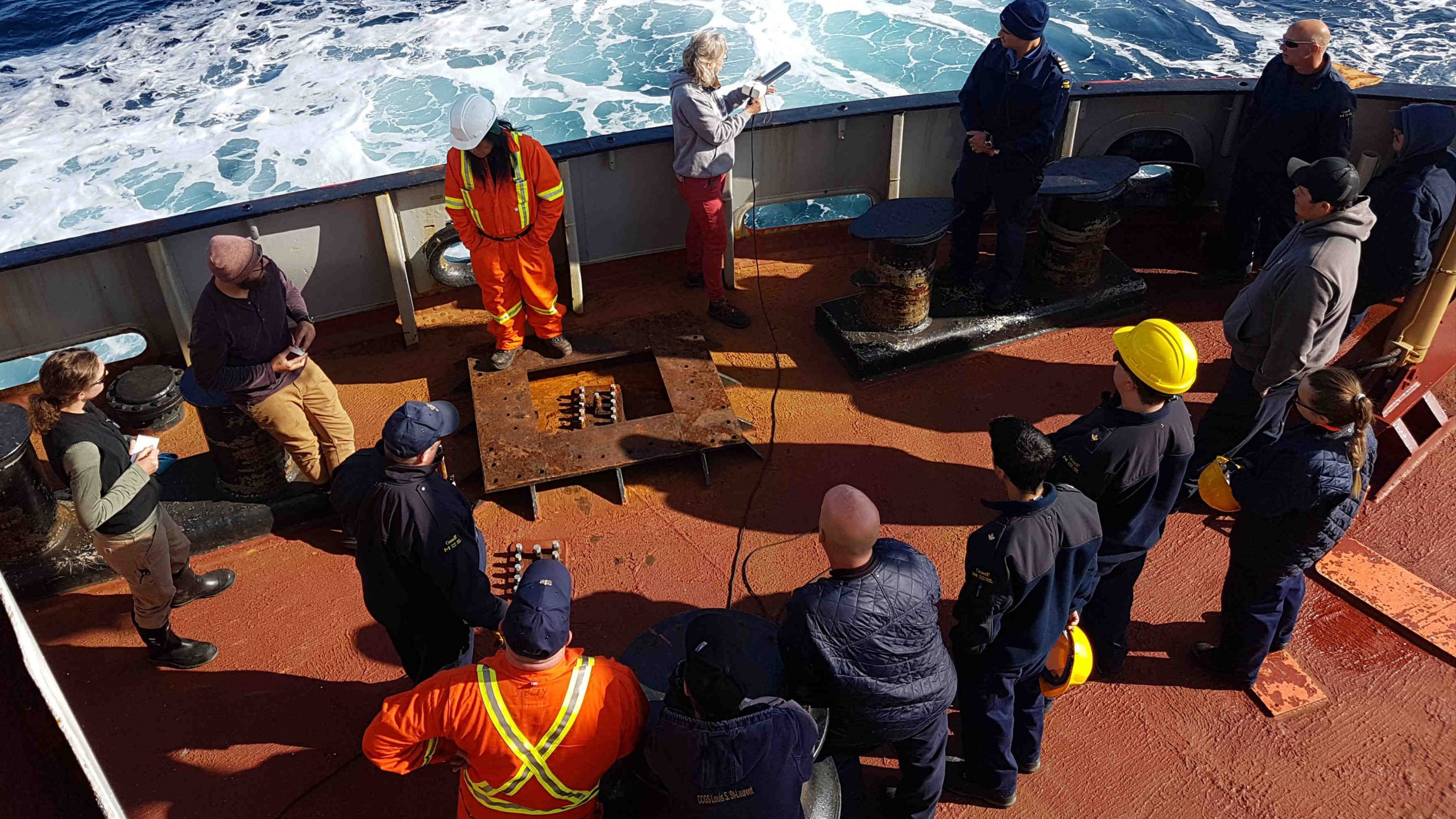Dispatch 2: Science Shakedown
Helen Gemmrich
August 20, 2021
Our second full day on the Louis was an exciting day for the science team: we completed our first science station!
We arrived on station in the late afternoon, but the day started after breakfast with a training session on the CTD rosette, one of our main sampling methods. “Rosie” collects an assortment of data, including temperature, salinity, pressure, oxygen and water samples. The CTD operator, who sits in a nice, warm shack beside the rosette, can close Rosie’s 24 Niskin bottles for samples at any depth on the click of a button. The rest of the team is on deck, sporting bright red floatation suits, harnesses and hard hats, ensuring that Rosie makes it safely from the lab into the water and back. One rosette cast means roughly 150 water samples, or 150 meticulously labelled bottles that we then need to record in our log sheets after the cast. The science team analyses some samples directly on board, while others are stored in the dedicated science freezers (beside the ship’s “Potato Room” and the gym) and brought back ashore.
We did two CTD casts at the first station, and in between casts, we also collected zooplankton with our “bongo” nets. As you can imagine, these nets look like extra-large bongo drums when they hang over the side of the ship. The “zoop” collected in the nets is preserved in various chemicals for analysis after the trip. Chief Scientist Sarah also trained the crew on deploying XCTDs, or expendable CTDs, which we will deploy at later stations. The calm day was great for troubleshooting and asking questions, taking the time to iron out the procedures before our back-to-back science days.
In the afternoon we also saw our first sea ice! I was very impressed by the huge wall of ice on the horizon – until I found out it was actually just a mirage. Called “ice blinks,” these optical illusions occur when light reflects off ice surfaces and the clouds above. Once we started hitting larger sea ice chunks in the evening, the Louis also started to roll around a bit, but the view across the ice was definitely worth the bumps.
Keep an eye out for a breakdown of the different science teams and instruments in the upcoming dispatches!




